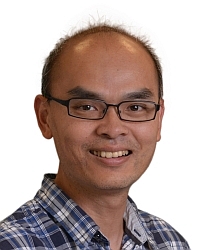TR2019-031
Bean's Critical-State Model as a Consequence of the Circuit Model of Non-linear Resistance
-
- , "Bean's Critical-State Model as a Consequence of the Circuit Model of Non-linear Resistance", Journal of Applied Physics, DOI: 10.1063/1.5084152, Vol. 125, No. 9, March 2019.BibTeX TR2019-031 PDF
- @article{Lin2019mar,
- author = {Lin, Chungwei},
- title = {{Bean's Critical-State Model as a Consequence of the Circuit Model of Non-linear Resistance}},
- journal = {Journal of Applied Physics},
- year = 2019,
- volume = 125,
- number = 9,
- month = mar,
- doi = {10.1063/1.5084152},
- url = {https://www.merl.com/publications/TR2019-031}
- }
- , "Bean's Critical-State Model as a Consequence of the Circuit Model of Non-linear Resistance", Journal of Applied Physics, DOI: 10.1063/1.5084152, Vol. 125, No. 9, March 2019.
-
MERL Contact:
-
Research Areas:
Abstract:
Bean’s critical-state model has been the foundation to compute the heat generated by the time-varying magnetic field or current in type-II superconductors. Two key features of the Bean model are (i) the current density is either zero or at the critical value Jc, and (ii) the change of current distribution begins at the surface. In this work, we apply the circuit model to simulate the process of charging a type-II superconductor. In addition to the self and mutual inductances among the basic units, we introduce a current-dependent longitudinal resistance to describe the critical current density, above which the conductor becomes resistive. By identifying the inductance values, we are able to reproduce the characteristic behavior of the Bean model. Specifically we consider a superconducting slab, a superconducting wire composed of straight or twisted filaments, and recover the established analytical results for these geometries. In terms of the circuit model, the behavior of the Bean model is a consequence of the geometry-specific structure of inductances and the non-linear resistances. Besides offering an intuitive explanation of the Bean model, our circuit-model calculations provide concrete examples to show that it can be used to simulate the complete charging process of multi-filament superconducting wires.
